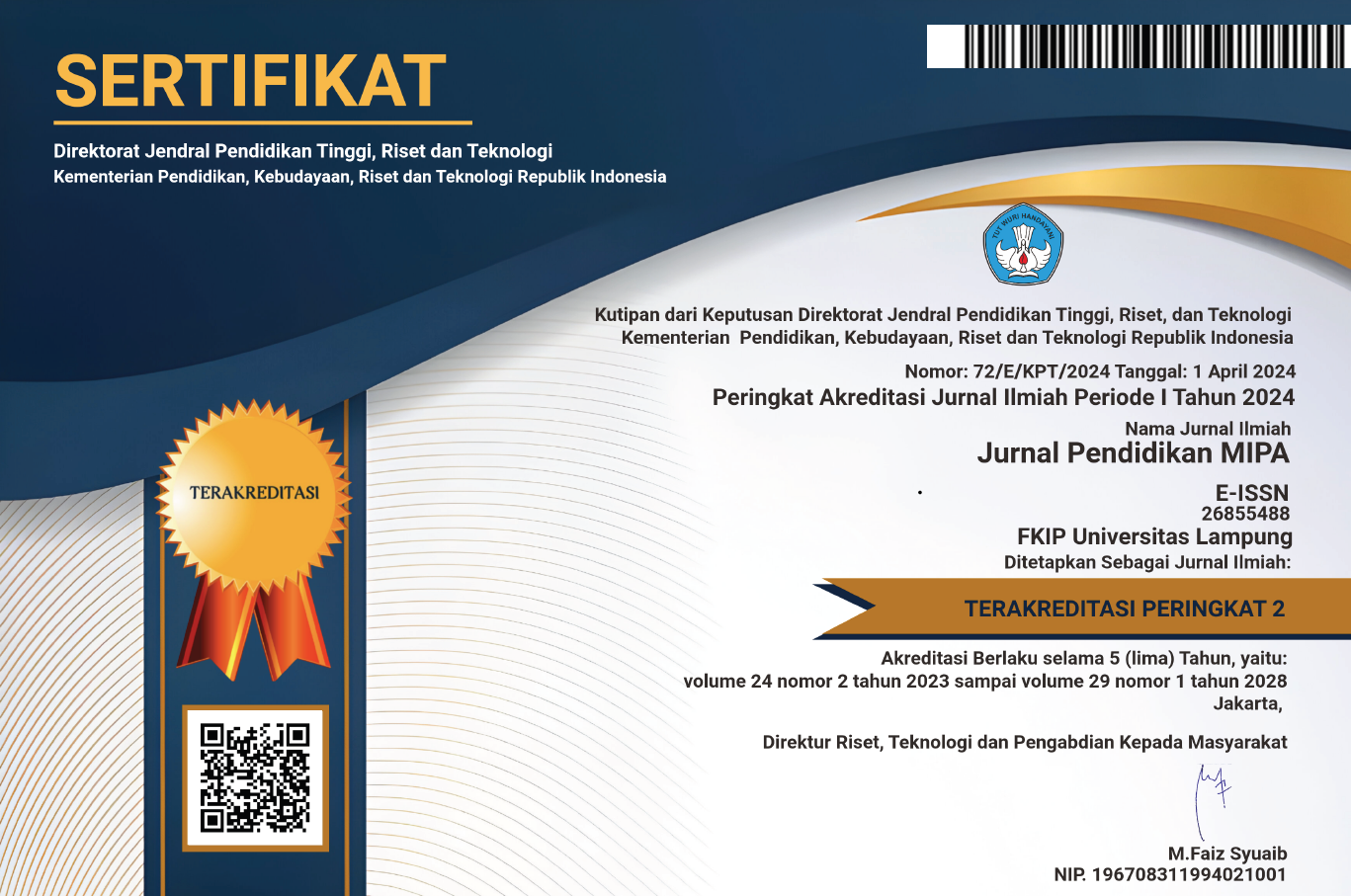 Country:
Country:
(1) Universitas Lampung, Indonesia
(2) Universitas Lampung, Indonesia
(3) Universitas Islam Negeri Raden Fatah Palembang, Indonesia
| Metrics→ |
| Indexing Site→ |
Copyright (c) 2022 Chansyanah Diawati, Noor Fadiawati, M. Mahfudz Fauzi Syamsuri
Creative thinking skills have an important role to face the challenges of the 21st century. This study aims to improve the creative thinking skills of junior high school students through a project-based learning model for processing cassava peel waste. This research method is quasi-experimental, non-equivalent pre-test-post-test control group design. The sample in this study was class VII students of SMPN 1 Purbolinggo, who were determined using a purposive sampling technique. The number of students in the control and the experimental classes was 32 people each. The instruments in this research are the Creative Thinking Skills Test and Performance Assessment. The results showed that the average N-gain for creative thinking skills in the experimental class was in the medium category (0.58), while on the control class, it was in the low category (0.29). Cohen's d coefficients for each indicator of creative thinking skills fluency, flexibility, originality, and elaboration; were 0.62, 0.58, 0.72, and 0.72, respectively, all in the medium category. However, Cohen's d coefficient effect size for the average N-gain overall creative thinking skills is 2.40, belonging to the very large category. Based on these results, it can conclude that the project-based learning model is effective with a very large effect on improving students' creative thinking skills.
Keywords: creative thinking skills, project-based learning models, cassava peel waste.


